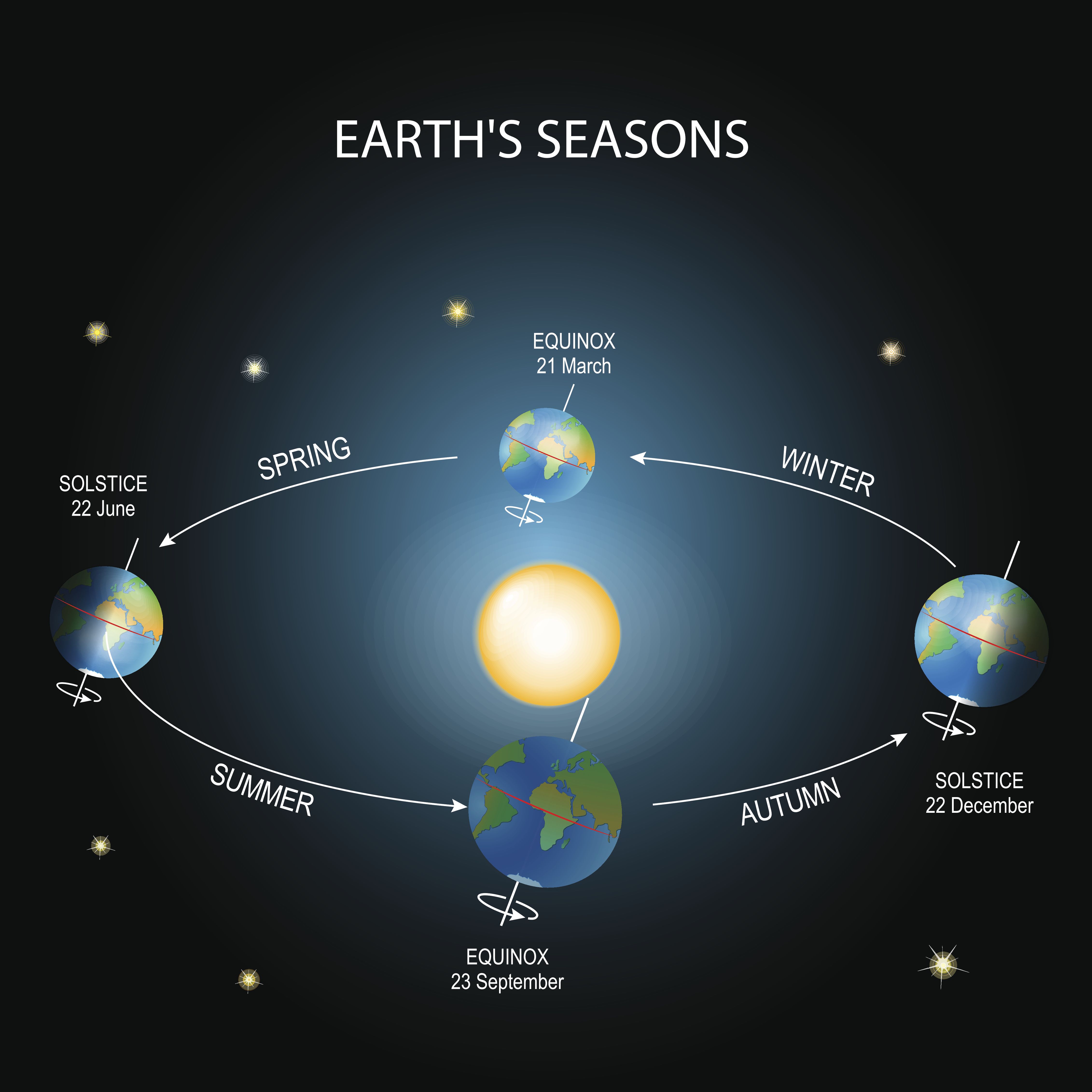

The summer solstice results in the longest day of the year (sometimes called midsummer), meaning it has the most time of daylight, and the winter solstice results in the shortest day of the year, meaning it has the longest period of darkness. In the Southern Hemisphere, it’s the opposite. In the Northern Hemisphere, the summer solstice occurs in June and the winter solstice occurs in December.

But which season begins with each solstice depends on which hemisphere you’re in. The solstices are traditionally considered to mark the start of summer and winter. Technically speaking, a solstice is one of the two the exact moments in the year when the sun reaches its northernmost point (around June 21, when the North Pole tilts closest to the sun) or southernmost point (around December 22, during the winter solstice) from Earth’s equator. The word equinox comes from the Latin aequinoctium, meaning “the time of equal days and nights,” from equi-, meaning “equal,” and nocti-, meaning “night.” What is a solstice?Ī solstice is one of the two times of the year when the positioning and tilt of Earth relative to the sun results in the most amount of daylight time or the least amount of daylight time in a single day. The word equinox can also refer to the position of the sun at this moment. Technically speaking, an equinox is one of the two specific moments in time when the sun is exactly above the celestial equator.
#2015 SUMMER EQUINOX FULL#
For this reason, the terms March equinox and September equinox are sometimes used to avoid a Northern Hemisphere bias.Ĭontrary to popular usage, an equinox doesn’t last for a full 24 hours. In the Southern Hemisphere, it’s the reverse. The autumnal equinox occurs around September 22 or 23, when the sun crosses the celestial equator going south. In the Northern Hemisphere, the spring equinox, or vernal equinox, occurs around March 21, when the sun moves northward across the celestial equator. The two equinoxes occur around March 20–21 and September 22–23, marking the onset of both spring and autumn.ĭuring the equinox, the sun crosses the plane of Earth’s equator, making nighttime and daytime (roughly) equal length all over the world. What is an equinox?Īn equinox is one of the two times of the year when the amount of daylight and nighttime hours are just about of equal length. Solstices mark the start of summer and winter.

A solstice is one of the two times of the year resulting in the most amount of daylight time or the least amount of daylight time in a single day. The vernal equinox marks the start of spring, and the autumnal equinox marks the start of fall. An equinox is one of the two times of the year when the amount of daylight and nighttime hours are just about of equal length.


 0 kommentar(er)
0 kommentar(er)
